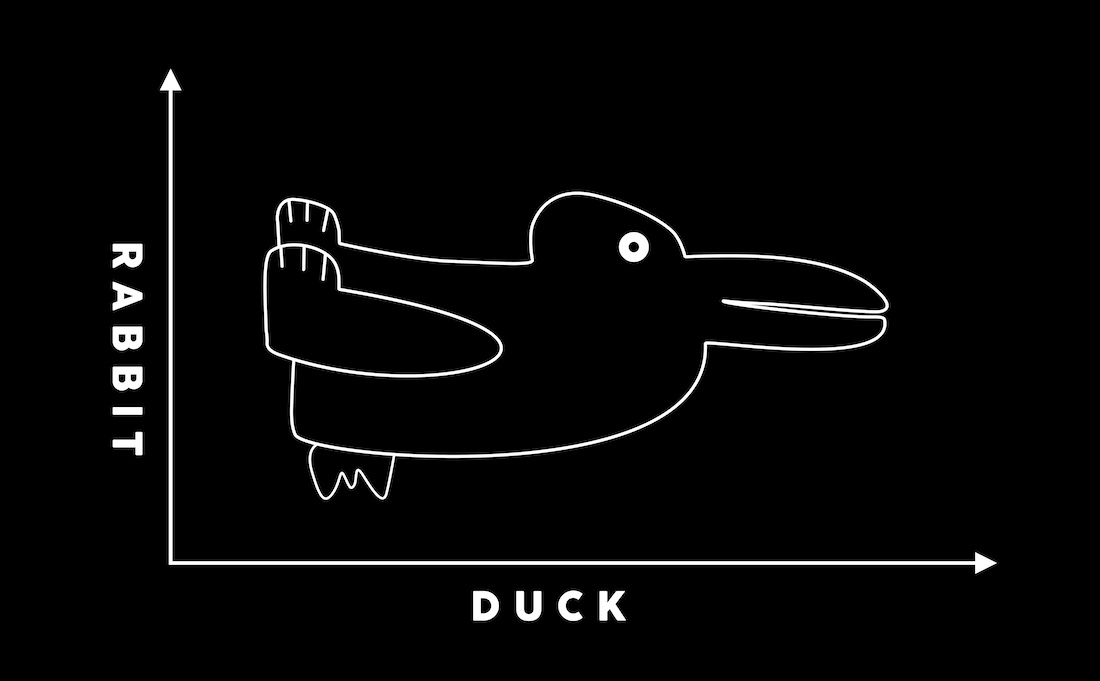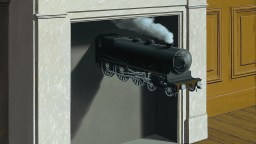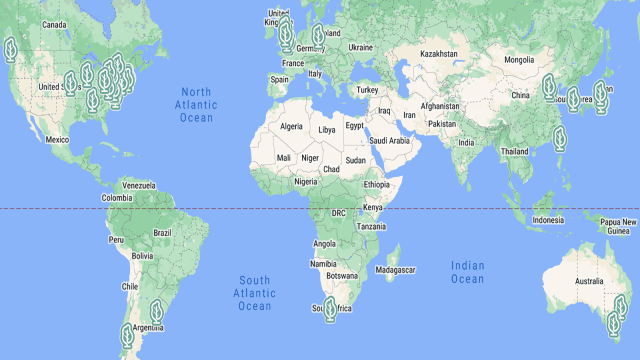Hone your problem-solving skills down to a fine art — with fine art
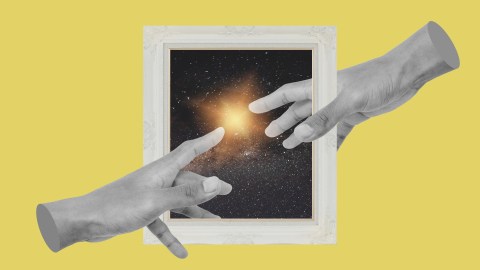
- While we can’t predict the future, knowing we will face problems is predictable.
- In her book Fixed, Amy Herman proposes that art can be a testing ground for problem-solving skills.
- Art helps us be more perceptive, communicate with others, and probe the tensions surrounding difficult problems.
If the COVID pandemic taught us anything, it’s that we should never underestimate the importance of problem-solving skills. Even knowing the COVID outbreak was a possibility — and we did know — there was no way to control all the risks, external threats, and unforeseen circumstances the pandemic brought. That’s true of our societies, our jobs, and our lives.
But while we can never predict the problems that will come our way, we can at least understand that they are predictable and develop the skills necessary to better define problems, communicate our understanding to others, and work together to solve them.
In her book Fixed: How to Perfect the Fine Art of Problem Solving, Amy Herman, the founder of the Art of Perception, offers an unconventional strategy for honing those skills: fine art. I spoke with Herman to learn how art helps us develop those skills and how we can bring those lessons into our lives.*
KEVIN: In your book, you posit that art can help people solve the problems they face. What led you to explore that big question, and how did you go about answering it?
HERMAN: After my first book, Visual Intelligence, came out, my publisher said, “Why are all these people still coming to you? Why are you training people from the NBA to nurses and Navy SEALs? I know your program’s interesting, but why from across the spectrum?” I said, “Give me a day to think about that.”
I went home and thought about it, and I came up with an answer. It’s because everybody has problems to solve. When they find that old solutions don’t work, they think, “Let’s call that art lady. She helped us last time. She made us see things differently. Maybe she can help us solve problems differently.” So I find more and more people aren’t calling me for the Art of Perception to say, “Oh, come show us how to open our eyes.” It’s to say, “We’ve got this problem. Can you help us fix it?”
That’s what got me thinking about how I could use the process of looking at works of art for the special application of problem-solving.
KEVIN: After reading your book, it seems art assists problem-solving in two distinct ways. First, studying art develops perceptive skills that we can use to gather the insights and information necessary to solve problems. Second, the artistic process provides a framework in which to work out problems.
HERMAN: I’m going to add a third one: Art allows you to get out of yourself. It allows you to literally and figuratively step away from everything you’re drowning in.
When you physically go to an art museum, you change your environment. But even if you look at an art book or go online, you’re getting out of yourself and exercising parts of your brain that you need in problem-solving. You then come back with a refreshed sense of inquiry.
Art does a lot without us even realizing it.
Laying the groundwork in the gallery
KEVIN: Perfect. Let’s take them in that order then. How does art help us develop those perceptive skills, and how can we transfer them toward other pursuits?
HERMAN: Art gives us a perceptual framework to look at something differently — whether it’s painting, sculpture, or photography. When you look at art, you give your brain permission to go to other places. It puts whatever you’re doing in a different context.
When it comes to problem-solving, we need to have a different context because the same old, same old isn’t working. Art as a sort of visual genre gives us a place to take our brains to start thinking about problems.
KEVIN: Can you provide an example of what that shift looks like?
HERMAN: Sure. I’ll give you an experience I had this summer. I was in Europe for work and treated myself to two days in Venice in between some of my presentations. I was at the Biennale, and I did something that I don’t usually do in countries where I don’t speak the language. I asked the guards, “What’s your favorite piece in this room?”
Now, English was not their first language, but they spent all day with these works, and they were excited to share their thoughts. It enhanced my ability to look at these works. Not only because I had somebody else’s perspective, but I can honestly say I would never have seen things their way.
When it came to problem-solving, I had this aha moment: I need to talk to more people about the problems I need to solve. Because we get stuck in our grooves, and that’s not always a good thing. Now, when I hear my clients say, “I would’ve never thought of that,” that’s music to my ears. Art gives us that ability.
If I can add in a parenthetical: You need a non-threatening atmosphere for people to realize they didn’t see something. It’s not judgment: “Oh, how could you have missed that?” When it comes to art, who cares? You missed it. But art provides us the opportunity to realize what we may be missing in the operating room, at the crime scene, or in a million other scenarios.
KEVIN: In your book, you write: “I believe that art can help lift us out of the confusion and chaos that usually accompany conflict — hopefully before we fully consume each other. And in the process, we might just learn to see problems not as disasters, but as opportunities.”
But art — visual art but also movies, books, and so on — elicits strong debate over impact and interpretations. What does a work represent? What’s its place in society? Even what harm may it do?
How can we use art to facilitate these non-judgmental opportunities when it can also be a source of such intense conflict?
HERMAN: I can’t believe I’m going to do this, but I’m going to quote a wall label I saw in Venice. I was looking at the paintings of Mary Weatherford. A lot of people may not know Mary Weatherford’s paintings. They are these huge, dark, gestural, abstract paintings, and she inserts a neon light right in the middle of them.
And the label read: “What Mary Weatherford does, and what we need to do writ large, is probe tensions and contradictions of presumed polarities.” What does that mean? It means we have to think about conflicts and problems, and we have to dive right in. Her probing tensions and contradictions was a 3D light on a 2D surface.
The concept stuck with me. Instead of looking at contradictions and tensions and saying, “Oh, I don’t want to go there,” art gives us the means to dive in and say: “You know what? I am going there. This is going to be messy. This is going to be bloody. It’s not going to be pretty. Let’s do this anyway, and we’re going to come out better on the other side.”
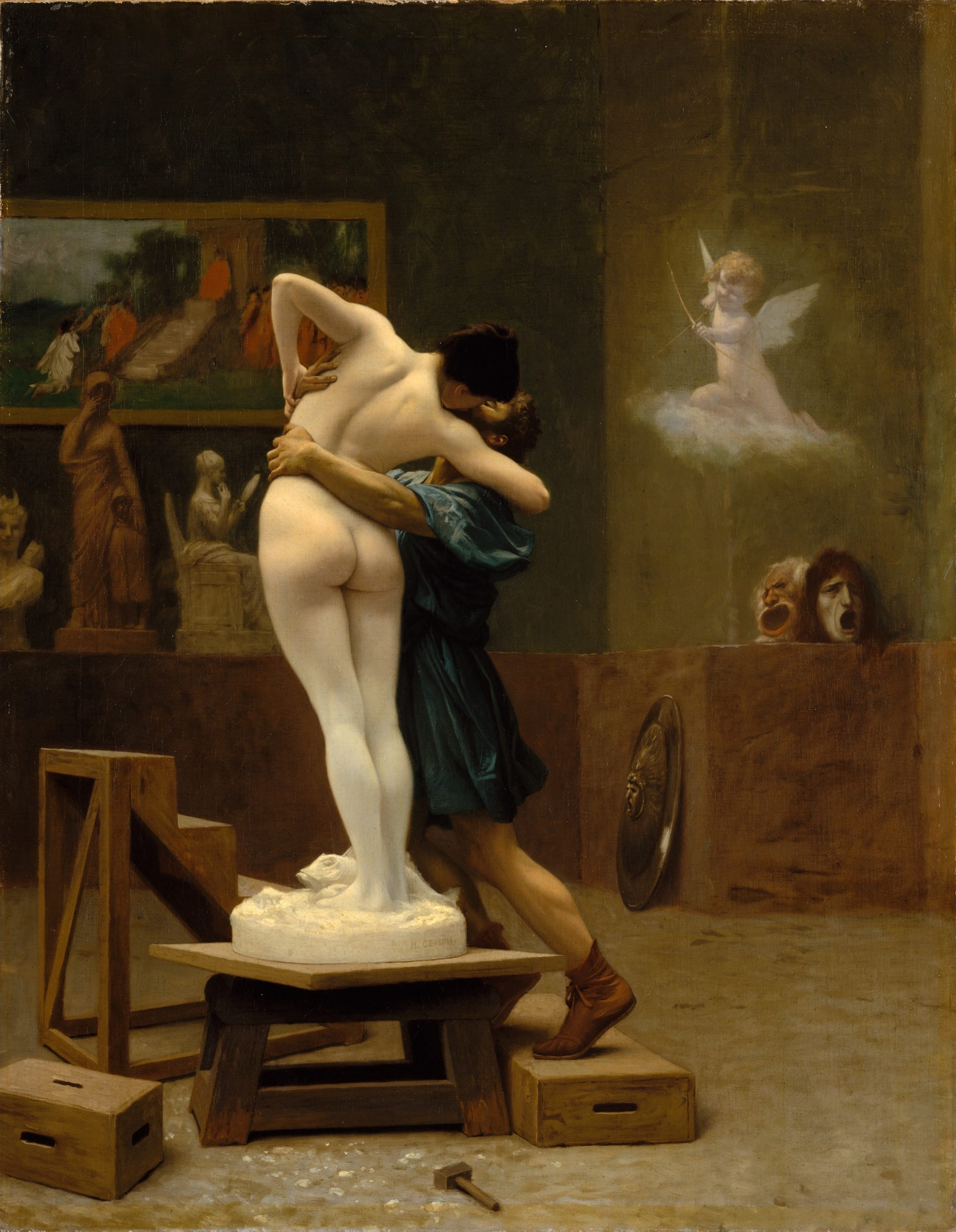
KEVIN: Let’s walk through that. I want to pull an example from your book: Jean-Léon Gérôme’s Pygmalion and Galatea. A lot of people obviously have different takes on that particular —
HERMAN: We’re not allowed to use the word obviously in my program. Nothing is obvious, and even less is clear.
KEVIN: Gotcha. After reading your book, it became evident that …
HERMAN: There you go!
KEVIN: [Laughs.] It became evident that there are many different takes on the painting. How do those differences come together as a tool for problem-solving when they seem to deter consensus?
HERMAN: Let’s start by saying that ambiguity is a given in our society. It’s sort of woven into everything we do. So, the next time you’re tempted to say to someone, “I can’t believe you can’t see this,” I want you to bite your tongue.
Because your eyes are attached to your brain, and my eyes are attached to my brain, I can’t see things the way you do. I physically don’t see it. Once we understand that no two people see anything the same way physiologically, it’s not so hard to understand why we don’t associate, process, or interpret the same.
So, you’re looking at Pygmalion and Galatea, and you’ve read some of the interpretations, and you’re thinking, “Are you kidding me? Who could come up with that?” But given people’s backgrounds, their experiences, their traumas, their upbringings, their educations, I have no idea what somebody’s going to see in a work of art.
One of the biggest takeaways I hope from this book is the idea of meeting people where they are. When you meet people where they are, you’re not yielding to them. You’re recognizing that they see things differently than you do and validating that. I want to hear how you see things, but in return, I want you to hear how I see things. It doesn’t mean I’m going to persuade you or you’re going to persuade me.
A new framing
KEVIN: And practicing that through art will bring it into other life situations?
HERMAN: Again, it’s a non-threatening vehicle to try to work through a problem. When I have two cops standing in front of a painting and they see entirely different things, I say: “We’re standing in a museum, and it’s fine that the two of you see this so differently, but what happens when you’re at the crime scene? One of you wants to draw a weapon, and the other says there’s no need to draw a weapon here. How do you reconcile that?”
We lay the groundwork in front of the work of art and say, “Okay, let’s agree that we see things differently, but we need to get better at communicating what it is we see because we have to work as a team.”
KEVIN: That’s a pertinent example because, unlike at an art museum, emergency responders don’t have the time to stroke their chins and mull things over.
HERMAN: Let me give you another example. I had a boss when I worked at a museum. One time, he said we need to solve a problem, and we need to get to the bottom of it before we can do anything else. There were ten people in the department, and he went around the table asking everyone to please articulate their understanding of the problem. There were ten different versions of about eight different problems.
I don’t know if he did that purposefully or not. But when you say, “Oh boy, we’ve got a problem,” that could be anything to anybody. Until we get better at communicating our perception of what we see, there’s going to be a whole lot of ambiguity and a whole lot of conflict.
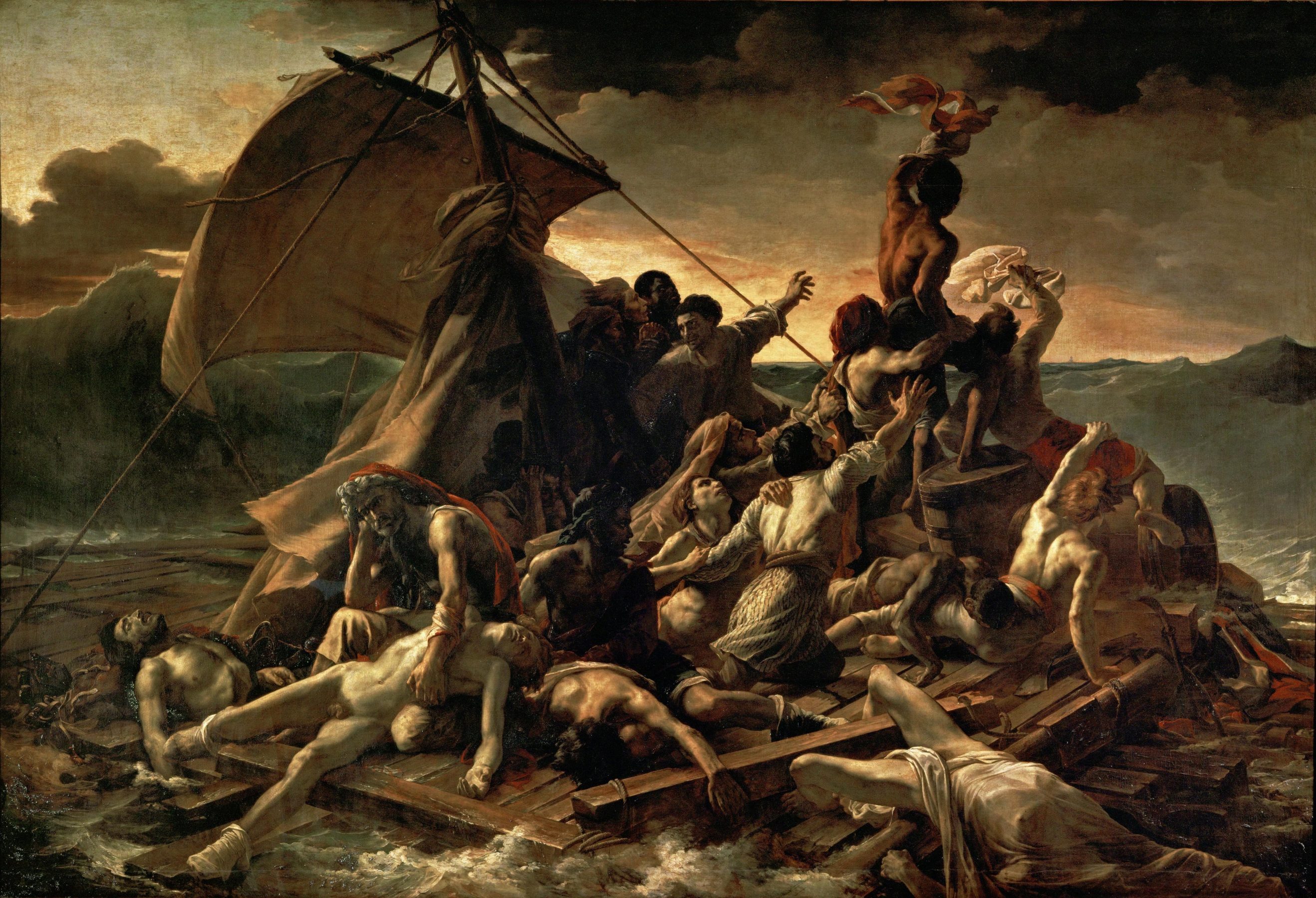
Turning problems into art
KEVIN: Let’s shift to the problem-solving framework. For time’s sake, let’s discuss the overarching steps of prep, draft, and exhibit (though, in the book, you break each one down into smaller steps).
In my experience, people probably skip the prep phase or give it short shrift more than the others. What do you think people misunderstand most about this phase?
HERMAN: As you said, the whole book is divided into those three steps because I wanted to create the analogy to creating a work of art. And every artist — no matter what they do — has to prep, draft, and exhibit. Though, exhibit doesn’t necessarily mean in a museum. It could mean selling, finishing whatever you’re doing, etc.
I think the biggest thing that people miss in prep is defining the project. It’s like what I said about the museum head bringing everybody to the table and getting 10 different versions of the problem. If you assume that everybody knows what the project is, assume that everybody knows what your resources are, and then dive right in, you’re going to miss a lot. And sometimes, what’s missed is crucial, and you’re going to have to go back to the drawing board.
So, you need to define what your project is, say what the problem is out loud, and then think about how you’re going to start to draft solutions. That’s the biggest thing in prep.
KEVIN: What’s one step that people can take to better define the project ahead of time?
HERMAN: It sounds so simple, but just write it down. I keep a big leather-bound journal, and it’s just my notes and my thoughts in chronological order. I don’t sit for hours. I just sketch out the thought, and then I feel better because I have something written that I can go back to either amend or throw out the window.
But I think people skip over this step because they say, “Oh, I know what I’m doing. I know what has to be done.” And you know what? You don’t.
Look at all the things that have gone wrong in the public eye from the government on down, such as bad messaging from corporations. And you think, “How did a marketing team let this out the door?” It’s because nobody sat down and said, “Okay, this is what we’re going to say, and this is what’s going to be on the commercial.”
KEVIN: And they just needed that one person to raise their hand.
HERMAN: Yeah. Say, “You may want to rethink this, or what if it comes across this way?”
You need that because it gives you a chance to look at what you’ve done and reflect on it instead of just charging forward. Taking that time to define the problem and articulate what you’re going to do is invaluable.
One of the biggest takeaways I hope from this book is the idea of meeting people where they are. When you meet people where they are, you’re not yielding to them. You’re recognizing that they see things differently than you do and validating that.
AMy Herman
KEVIN: Something that struck me while reading your book is the importance of self-awareness. I think that gets skipped over when we’re teaching people how to solve problems in school.
HERMAN: Absolutely. In all the books I’ve written, I talk about looking in the mirror literally and figuratively — knowing yourself, your strengths, your weaknesses. I think that self-awareness, the idea of self-perception when you’re looking at art, is humbling.
You need to know yourself and say, “I’ve missed things before. I could be missing something here.” We need to be selfish about this because I believe that multiple perspectives make for better decision-making. And I’d rather get it right than get it done quickly.
KEVIN: You have that phrase in the book: Festina lente.
HERMAN: “Make haste slowly.” It sounds counterintuitive, but if you slow down to speed up, you’re negating the idea that you’re going to have to start all over again because you made a mistake along the way. Mistakes will happen anyway, but if you slow down to think about mistakes as they happen, you’re saving time.
Break your problems down
KEVIN: In your book, you don’t have a “solve for X” step. Instead, you focus on the importance of drafting. What do you see as the biggest challenge most people face when drafting, and how can they overcome that?
HERMAN: I’m not a linear person, and looking at art is not a linear process, so I’ll never have a “solve for X” kind of thing.
For drafting, I think the most important step is to break your problem into bite-sized pieces. Because anybody can handle small problems. It’s the big ones that are daunting.
When you break things into bite-sized pieces, it gives you these milestones so you can start to chip away at this problem. You can celebrate each milestone and say, “Look, I did this!” And then you move on to the next bite-sized piece.
When I got a cancer diagnosis in 2014, I mean, they threw it at me. You’re going to have 16 sessions of chemotherapy, and you’re going to have radiation, and you’re going to have five surgeries, and you’re going to lose your —- and I’m like, “Whoa. No! I can’t do this. I have a business to run.”
So what I did is I broke it down into chemo every Friday. I’ll have it this Friday, and then I’ll worry about the next one when that’s over. One week at a time.
Before I knew it, eight were done. Then nine. Then ten. And then there I was at the last chemo. I know that sounds overly simplified, but things don’t get more complicated than having a cancer diagnosis.
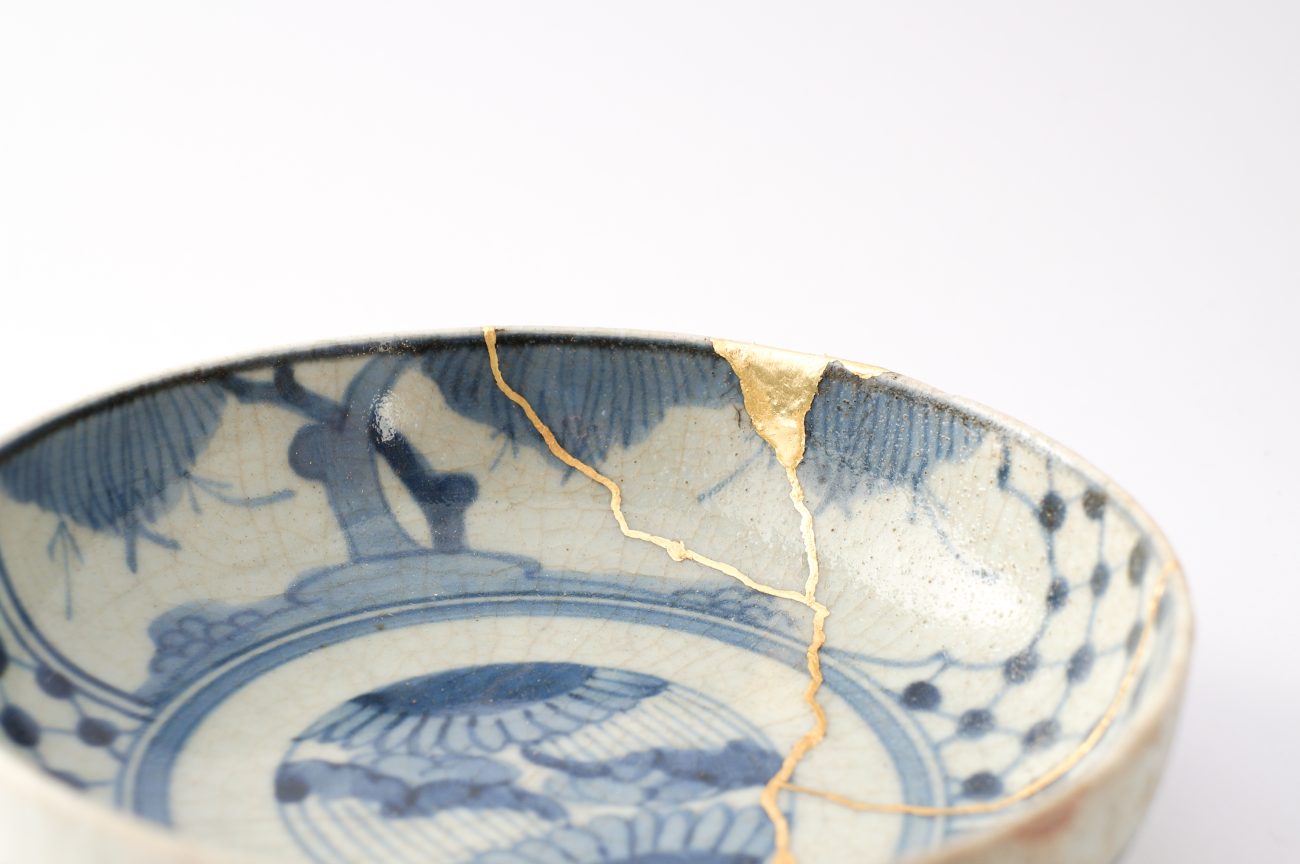
Gilding your mistakes
KEVIN: For the exhibit step, you rightly note that no solution will ever be perfect. But even knowing that, it can be difficult to get to the point where you accept, “Okay, I can show this now.”
What’s something you can share from your research to help someone drop the perfectionist act and show their work?
HERMAN: It may be trite, but I’ve adopted the phrase “failing forward.” The idea of failing forward is saying, “Okay, you know what? We’ve all made mistakes. We’ve all had failures. I’m going to leverage and talk about them.” Not only is it cathartic to talk about what went wrong, but hopefully, you’ll gain some benefit and not make the same mistakes that I did.
The beautiful thing about the kintsugi is that it’s so counterintuitive. You have Japanese potters scraping up shards of pottery, putting them back together, and filling them in with gold to find beauty in the mistakes. And what I’ve taken from kintsugi is not only do you find beauty in the mistake, you become unique.
I was a lawyer, and oh my God, I hated it. Hated it. I was not a successful litigator. It was so awful. But I took what I could get from the law and parlayed it into another career. Instead of saying, “I’m not even going to talk about my legal years,” it laid the groundwork for catapulting into another area. Talk about failing forward.
So the idea of saying to perfectionists, “You can never talk about this.” Yeah, you can talk about it, but you can talk about what you’ve done to overcome it. Leverage those opportunities because everybody has them. I don’t believe in sweeping them under the rug anymore. Bring them out, bring them to the floor, and see what you can do with them. See how you can recycle them.
KEVIN: Recycling mistakes. I like that.
HERMAN: I’ll give you an example from nature. In Pine, Colorado, last fall, a wild elk was running around with a tire around its neck. This young elk had come in contact with human pollution when it was a baby, got a tire lodged over its neck, and then it grew antlers so it couldn’t dislodge the tire. It was very sad.
The game wardens decided they were going to tase the elk to get the tire off because it was going to kill it.
They got it down, but when they went to saw the tire, they ran into another problem. The tire had a steel rim in it, and their window was short. So, how do you solve that problem? They shaved off the elk’s antlers and took the tire off. The elk woke up, ran away, and grew new antlers. Everything was fine.
KEVIN: Oh, good.
HERMAN: What’s the moral? You can’t let perfection be the enemy of good. Was it an ideal solution? No, it wasn’t. They left the elk defenseless and intervened in nature. But that elk was going to die anyway. So in that case, it had to be good enough.
In my family, we have a joke now. It gives new meaning to the phrase “just get this tire off my neck.”
Finding your artistic eye
KEVIN: I feel that a lot of people are intimidated by art. Even the idea of getting into it.
Say, I haven’t been to an art gallery since my sophomore field trip and, if I’m being honest, I wasn’t paying that much attention because I was too busy flirting with Rebecca Goldstein at the time.
HERMAN: Of course.
KEVIN: But now I’m reading this interview and thinking, “Okay, this sounds interesting. But how do I start? How can I take this into my daily life”
HERMAN: I tell people two things.
First, the next time you’re leaving your house, go out with new eyes and try to see something you didn’t see the day before. Then simply make a note of it. We all go from point A to B every day, and we do our thing. Try to look around and get out of your linear path, and make a note of what you saw.
Once you’ve trained your brain to do that for a couple days, you’ll start to do it automatically. You’ll be amazed how much you’ll broaden your range of vision.
Second, if you go into a gallery or art museum, don’t read the labels. Look around the gallery and ask yourself, “If there is one work here that I could take home with me, which one would it be?”
It has nothing to do with being intimidated by academics or knowing art history. Gravitate to the work that draws you in and take a good long look at it and figure out why it is you want to take it home. You’ll start to engage in that kind of neuroplasticity, with art being the impetus to think and see more broadly.
Then at the end of looking, you can read the label if you want. But look before reading and decide what you like. Because there are no rules in looking at art. You should go, look at what you enjoy looking at, engage with what you want to engage with, and then leave the museum. And in the process, you’re getting a new way to look at things and think about things.
Art allows you to get out of yourself. It allows you to literally and figuratively step away from everything you’re drowning in.
Amy Herman
The confidence to move forward
KEVIN: I like those approaches. Is there anything you’d like to add?
HERMAN: I didn’t write the book with a pandemic in mind, but in hindsight, so much of it is retroactively applicable. We need to be better prepared because, as my grandmother used to say, “You can’t see around corners.” We don’t know what problems are waiting for us. And the more arrows that we can put in our quiver to solve problems that we don’t know about, the better we’re going to be.
We don’t want to be caught like we were in this pandemic. So anything that we can use, even if it means looking at art and talking and thinking about different things, should give us some confidence moving forward. Is that too corny?
KEVIN: Not at all. That’s a great wrap. Where can people find you online to learn more about the art of problem-solving?
HERMAN: My website is artfulperception.com. I also have a dedicated book website, which is artfulbooks.com. And I’m on social media @AmyHermanAOP.
Learn more on Big Think+
With a diverse library of lessons from the world’s biggest thinkers, Big Think+ helps businesses get smarter, faster. To access Big Think+ for your organization, request a demo.
* This conversation has been edited for length and clarity.
